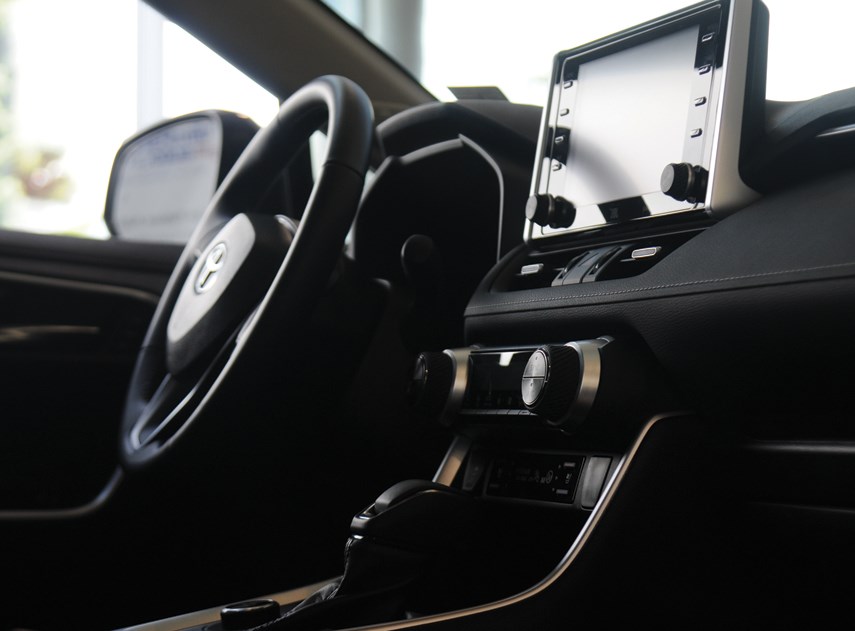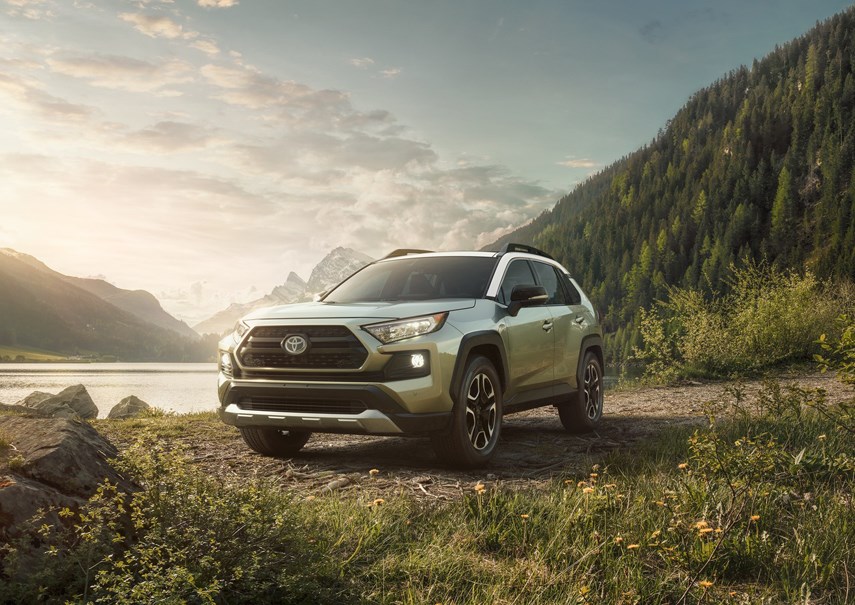A staple of the Toyota fleet for more than 25 years, the RAV4 made its debut in North America in 1996 as a 1997 model.
Many credit Toyota for starting the compact sport utility market with the original Toyota RAV4, as it was one of the very first crossovers ever produced. Right from the get-go, the RAV4 was an incredible success and opened up a whole new market segment that didn’t exist before.
Now, over two decades later, the fifth generation RAV4 is still selling incredibly well, and continues to beat its nearest competitors from Honda and Nissan (by volume).
Can the 2019 Toyota RAV4 continue to remain as the top-seller in an increasingly competitive market? With a new hybrid system for 2019, added standard features, fresh new styling and competitive pricing, it doesn’t seem like the RAV4 will be knocked from the top spot any time soon.
By the way, the RAV4 hybrid is selling so well that there is a two-month waiting list.
Design
In an attempt to “squeeze more out of modern life,” the RAV4 has been completely redesigned to be practical with a rugged and adventurous twist.
The fifth-generation RAV4 is all new for 2019 and features an imposing, almost aggressive stance. Oversize fender flares are paired with sleek lines to give a bold and elegant look. This new exterior look is designed to entice a new cross-section of buyers in a competitive market. The eye-catching details are slightly different depending on the trim level, giving a lot of variety for the individual tastes of the driver. To make things a little more interesting, a few funky, two-tone colour combinations are now available as well.
The new RAV4 features styling that’s more like a 4Runner than its predecessor, in order to attract those outdoor types.
The interior cabin is a bit noisy compared with other crossovers, but other than that the RAV4 is near perfect with well-designed and functional dash. Soft-touch details and high-quality plastics make for a comfortable interior and there is no lack of storage areas to stash your things.

The Toyota RAV4 features the Entune 3.0 system which has a number of smart technologies including App Suite Connect, Safety Connect and Destination Assist. With a Qi wireless charging pad located right under the main console panel, compatible devices can be easily charged. A note to Android users: Android Auto is not yet available for the RAV4, while Apple CarPlay is standard.
Also standard on all trim levels is the Toyota Safety Sense 2.0 system, which includes pedestrian detection, lane departure warning, automatic high beams, blind spot monitor, steering assist and lane keep assist. Toyota vehicles are known for being some of the safest available, and the Safety-Sense 2.0 system is an excellent value for the price of the RAV4.
Performance
For all trim levels, the Toyota RAV4 is powered by a 2.5 litre four-cylinder engine that produces 203 horsepower and 184 foot-pounds of torque, mated to an eight-speed automatic transmission. Sport, Eco and Normal drive modes help to customize the driver experience.
Like many in the Toyota fleet, the RAV4 is built upon the Toyota New Global Architecture (TNGA). This gives the RAV4 more rigidity than previous models, along with better handling and cornering.
In the real world, the 2019 RAV4 expresses a more refined feel than the 2018 version, along with a slightly quicker steering feel and perhaps a tad better handling. But to be honest, it will be hard for an average buyer to detect a significant difference in feel between the new and the old in terms of handling, acceleration, and overall road feel – though this is probably a good thing since the fourth generation RAV4 continued to sell well right until it was replaced by the fifth generation and there was no need to take a chance and change its feel radically.
“If it ain’t broke, don’t fix it,” certainly applies to this high volume seller.

All things considered, however, I would say that the loud engine (especially during hard acceleration) and slightly numb steering feel make the new RAV4 trail behind the Honda CR-V when it comes to road manners. The best handling compact SUV title still goes to the Mazda CX-5, which provides crisp, predicable handling.
For the RAV4 All-Wheel Drive LE and XLE, Rear Driveline Disconnect feature is present and it improves fuel efficiency by cutting power to the rear when unnecessary. One of the reasons for an improved handling is the incorporation of Dynamic Torque-Vectoring to spread out power to where it’s most needed. Additional multi-terrain modes are available, by the way, including Mud, Sand, Rock, and Dirt.
Fuel economy for the RAV4 is comparatively low, calculated to be roughly 7.3 litres/100 kilometres for combined city/highway driving. The RAV4 Hybrid is even lower, of course, at a combined city/highway efficiency of 5.8 l/100 km.
The rugged Toyota RAV4 in Trail trim has been designed with off-roading and towing in mind, and can tow up to 3,500 pounds.
Summary
When choosing the RAV4 that is right for you, Toyota has provided many options for you to consider. The RAV4 comes in LE, XLE, Trail and Limited trim levels, and the trims available depend on if you opt for front-wheel drive or all-wheel drive. There is also a hybrid option that comes in LE and XLE trims. Pricing for the 2019 Toyota RAV4 starts at $27,990 for the FWD LE model, and all the way up to $42,090 for the Hybrid Limited option.
For 25 years, the Toyota RAV4 has been a staple of the crossover segment. While others, such as the Honda CR-V, Jeep Cherokee, Mazda CX-5, and the Nissan Rogue have broken into the market, the RAV4 still reigns supreme. With a competitive pricing package, tried and true Toyota features and a new hybrid option, the future is looking very good for the RAV4. I should know, as my wife currently owns the RAV4 and simply loves it.



